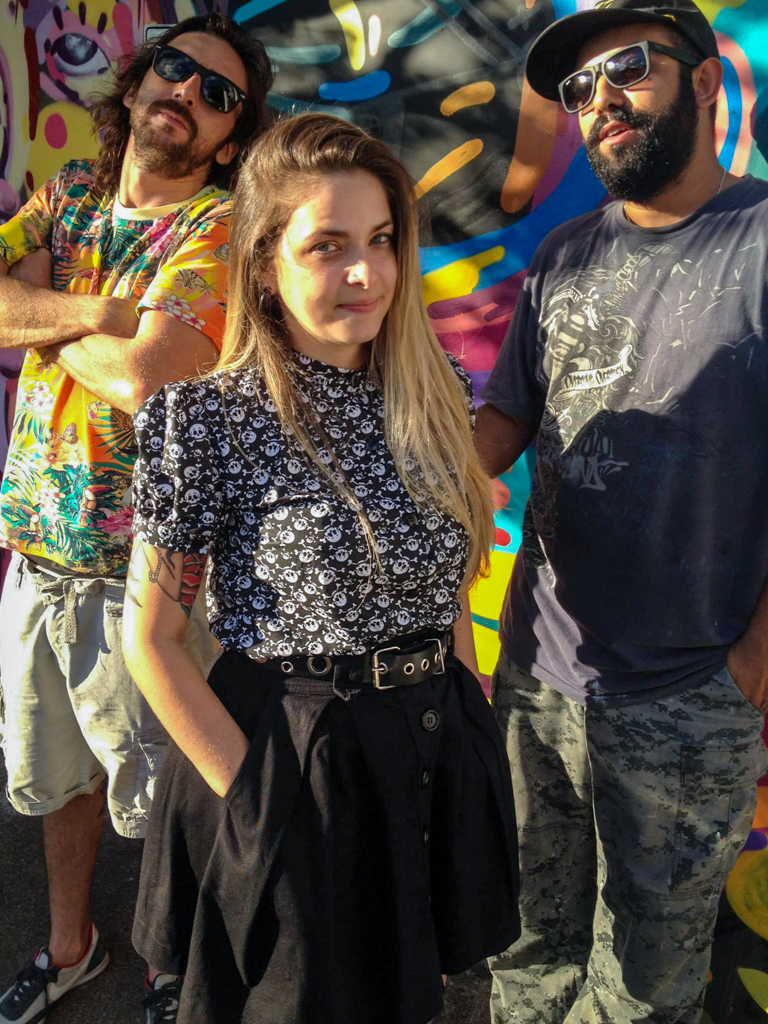(en) My first visit to São Paulo was by accident. After missing a flight, I found myself stranded in this sprawling metropolis, wondering why anyone would want to spend time in such a concrete, grey, rainy, crime-ridden and polluted place when the golden beaches of Rio de Janeiro were only a short distance away. With nowhere to go, the next morning I called the only person I knew in São Paulo – a lawyer I had met the day before on a tour of the favelas near Copacabana.
(fr) Ma première visite à São Paulo s’est faite par hasard. Après avoir raté un vol, je me suis retrouvée bloquée dans cette métropole tentaculaire, me demandant pourquoi quelqu’un voudrait passer du temps dans un endroit aussi bétonné, gris, pluvieux, criminel et pollué, alors que les plages dorées de Rio de Janeiro n’étaient qu’à une courte distance. N’ayant nulle part où aller, j’ai appelé le lendemain matin la seule personne que je connaissais à São Paulo, une avocate que j’avais rencontrée la veille lors d’une visite des favelas près de Copacabana.
(en) She lived in Vila Madalena, an area known for its artistic energy, lined with galleries, bookshops, cafes, street art and boutiques. To my relief, she offered me a place to stay and told me to meet her at an art gallery where a friend of hers, an artist and gallery assistant, would look after me. This is how I met Enivo, an incredible painter who introduced me to São Paulo’s thriving hip-hop art scene, which led me to return six more times, staying for up to two months at a time.
(fr) Elle vivait à Vila Madalena, un quartier connu pour son énergie artistique, bordé de galeries, de librairies, de cafés, d’art de rue et de boutiques. À mon grand soulagement, elle m’a proposé de m’héberger et m’a dit de la retrouver dans une galerie d’art où une de ses amies, artiste et assistante de galerie, s’occuperait de moi. C’est ainsi que j’ai rencontré Enivo, un peintre incroyable qui m’a fait découvrir la scène artistique hip-hop florissante de São Paulo, ce qui m’a amené à revenir six autres fois, pour des séjours allant jusqu’à deux mois.

My first afternoon in São Paulo.
During one of my stays, I discovered the story of Zona Autônoma Temporária (ZAT), an artistic residency organised in January 2016 by the artist Tinho (Walter Nomura), co-curated by Keila Alaver. ZAT was conceived as a temporary autonomous zone for artistic expression, embracing an anarchic and rule-free environment that fostered creativity. Twenty-five artists spent ten days living and working together in a former monastery, exchanging ideas, exploring artistic processes, and creating a unique body of work influenced by the space itself.
The residency was inspired by Tinho’s experience in Xucun, China, where he had participated in a similar project. Despite logistical challenges, including a lack of basic facilities, ZAT cultivated a deep sense of collaboration among artists from diverse backgrounds, including graffiti, street art, skate culture, and contemporary fine art. The environment was raw and immersive, requiring adaptability as artists negotiated space and resources while coexisting in close quarters.
Discussions and forums played a crucial role in the residency, highlighting the importance of cognitive engagement alongside technical skills. Artists lived and worked in the same space, creating works that interacted with the history and architecture of the former nunnery, which had since been repurposed as a BB gun battlefield. Their creations reflected the layered and evolving nature of the location, with performances and installations engaging directly with the space and each other.